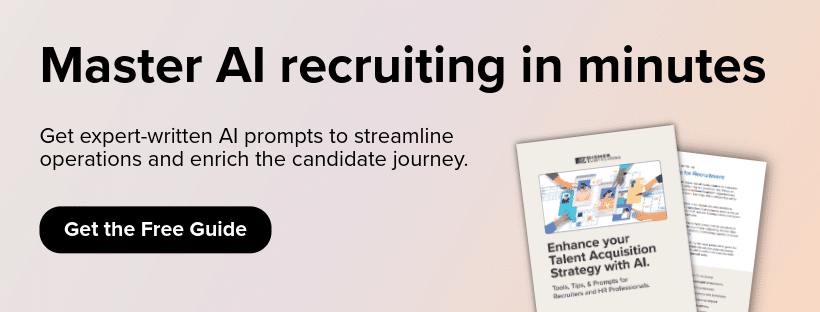
You’re doing everything you can to fill that role—posting the job, reviewing resumes, setting up interviews. But for some reason, great candidates keep slipping away. They stop responding, drop out mid-process, or accept another offer.
It’s frustrating and confusing. Many hiring managers and talent teams feel this way, especially when hiring for technical or in-demand roles.
At DISHER Talent Solutions, we’ve worked with hundreds of companies on building effective hiring processes that attract top talent. Through this experience we’ve identified six reasons candidates fall off during interviews and how you can fix each one.
6 Reasons You Might Be Losing Good Candidates
Even well-intentioned companies lose great candidates due to small mistakes in their hiring process. These are some of the most common problems we see.
1. Slow Hiring Timelines Frustrate Top Talent
When it takes two or three weeks just to move someone from one interview to the next, you’re sending a clear message even if you don’t mean to. Candidates interpret delays as a lack of interest or urgency.
Top talent doesn’t stay on the market long. If you take too much time, they might accept an offer elsewhere or withdraw altogether. It’s not always personal. It’s just that they’re in demand.
To speed things up:
- Set a clear timeline before you post the job.
- Communicate timeline expectations with candidates in each stage of the process.
- Pre-schedule interview availability for key team members.
- Use a shared hiring tracker to monitor candidate progress.
2. Poor Communication Throughout the Interview Process
Silence can feel like rejection. If a candidate interviews on Monday and doesn’t hear back by Friday, they’re likely filling in the blanks themselves. Maybe they assume they bombed the interview, or worse, maybe they think you just forgot about them.
Good candidates want to feel respected and informed. That means clear, timely updates at each step of the process.
Stay on top of candidate communication by:
- Sending regular updates, even if it’s just “we’re still reviewing.”
- Assigning one person to own candidate communication.
- Set up reminders to check in with candidates, whether this is in your applicant tracking system (ATS) or even just a note on your calendar.
- Using templated responses to stay consistent and timely. You may even use automation to help you!

3. Interviews That Feel Disorganized or Unprofessional
You might not notice it from your side, but candidates can quickly pick up on a messy interview process. Maybe people show up late, ask the same questions over and over, or don’t clarify who’s making the final decision.
When interviews feel sloppy, candidates start to wonder if that’s what the day-to-day will be like. They want to work for a team that’s prepared, respectful of their time, and aligned with what they’re looking for.
To fix this:
- Create an interview brief with roles, questions, and goals for each stage.
- Debrief internally to share impressions and align on decisions.
- Prep candidates with a short agenda before each interview.
4. Misalignment Between Job Description and Interview Content
A candidate reads your job post and gets excited. But then they come to the interview and the role might sound completely different. The responsibilities may not match, or the expectations may have shifted. That disconnect can feel misleading.
Candidates want to know what they’re signing up for. If they sense you’re overselling the role or not being upfront, you risk them moving on. They may have experienced that bait-and-switch before, and they don’t want to make a bad career move.
Here’s what you can do to ensure alignment:
- Review job descriptions as a team before posting.
- Train interviewers to speak to the actual day-to-day of the role.
- Be transparent about areas of uncertainty or growth.
5. Poor Candidate Experience and Lack of Respect
Sometimes it’s the small things that turn people off. Not having clear directions or arrival instructions, waiting in the lobby for 15 minutes without being acknowledged, getting rushed through an interview without a chance to ask questions…
These moments add up. They leave candidates feeling like they don’t matter, and that’s not a feeling they’ll forget. Even if they were excited about the role, a poor experience can leave a bad taste.
How to create a thoughtful experience:
- Greet candidates warmly and stay on time.
- Allow space for two-way conversation.
- Personalize your communication, even rejections.
Enhance your job descriptions with these simple tips >>
6. Uncompetitive Offers or Unclear Compensation Discussions
You can have the best interview process in the world, but if you end it with a weak offer or vague details, candidates will start second-guessing. They want to know how your offer compares in salary, benefits, growth opportunities, and culture.
Too many companies wait until the very end to bring up pay. But by then, candidates may already have another offer in hand. If you’re vague about compensation, they could assume the worst or feel like you’re hiding something.
Tips to strengthen your offers:
- Be transparent about salary range on the job description or first call.
- Share the full picture of benefits, flexibility, mission, and team.
- Be prepared to negotiate respectfully and quickly.
Build a Process That Attracts and Retains Top Talent
You don’t need a perfect process. But you do need a respectful, honest, and communicative one.
We’ve walked through six of the most common ways companies lose people mid-interview, all of which are fixable! And when you start making small improvements, you’ll see great results: better candidates, fewer drop-offs, and hires who are excited to join your team.
If you need help solving the lost candidate problem, we’re happy to jump in. Get in touch here.




